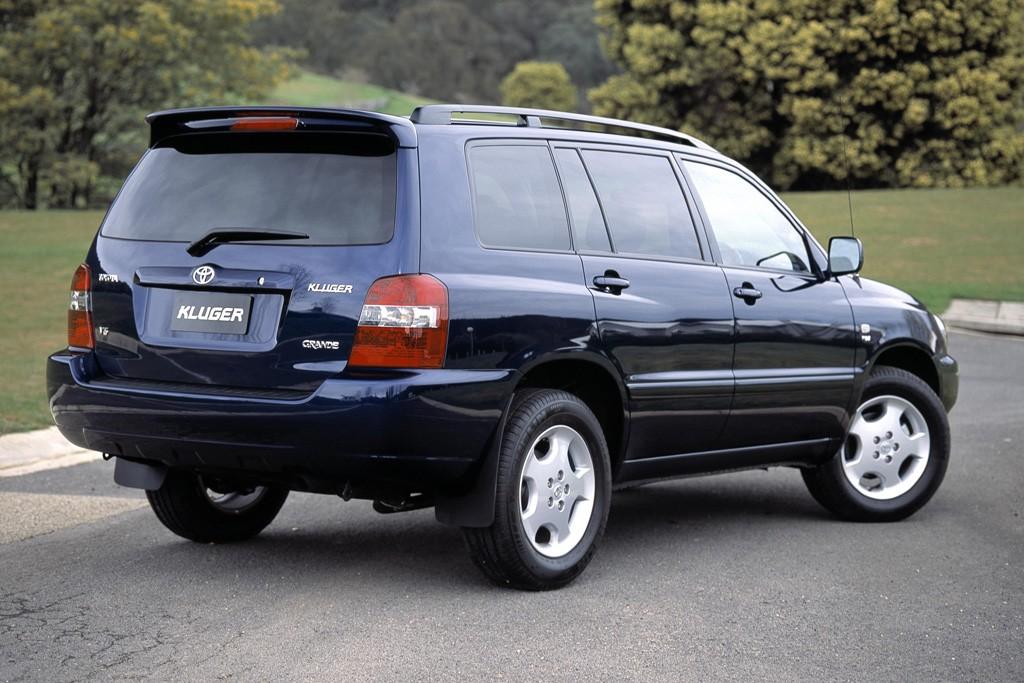Why Genuine Parts Matter for Your Vehicle’s Repair
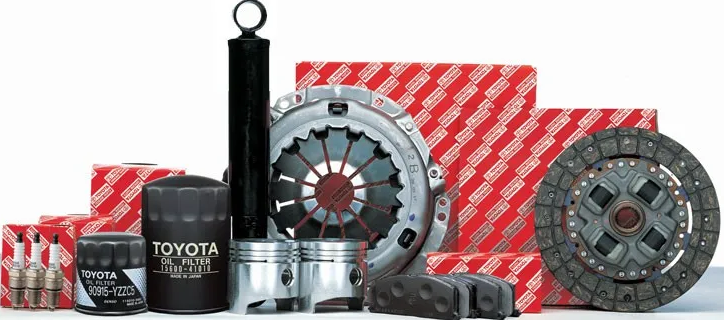
When it comes to maintaining and repairing your vehicle, the debate between using genuine versus aftermarket parts is a pivotal one. For many Australian vehicle owners, the choice might not seem significant at first glance. However, the type of parts used in your vehicle can have profound implications not only on its performance but also on your safety and the vehicle’s overall lifespan. This article delves into the essential reasons why opting for genuine parts is a wise decision for any vehicle repair.
Understanding Vehicle Parts: Genuine vs. Aftermarket
At the core of this discussion are two types of parts: genuine and aftermarket. Genuine parts, also known as Original Equipment Manufacturer (OEM) parts, are made directly by the vehicle’s manufacturer. They are the very same parts used in the production of new vehicles. On the other hand, aftermarket parts are produced by different manufacturers and not endorsed by the original vehicle manufacturer. While aftermarket parts are often touted for their affordability and variety, they may not always match the quality and compatibility of genuine parts.
The Importance of Genuine Parts for Your Vehicle
Safety: The paramount concern for any vehicle owner should be safety. Genuine parts are designed and tested specifically for your vehicle model, ensuring a perfect fit and optimal performance. This precise engineering guarantees that your vehicle operates as it was intended, maintaining the manufacturer’s safety standards. In contrast, aftermarket parts might not have undergone the same rigorous testing, potentially compromising vehicle safety.
Warranty Protection: Using genuine parts is also crucial in preserving your vehicle’s warranty. Many manufacturers stipulate that the warranty becomes void if aftermarket parts cause damage. Genuine parts come with their own warranty coverage, offering peace of mind and protection against defects.
Long-Term Value: While genuine parts might come with a higher price tag initially, their value becomes evident in the long run. Designed to meet the exact specifications of your vehicle, genuine parts usually last longer and perform better, reducing the need for frequent replacements. This can lead to significant savings over time, not to mention the avoidance of the hassle associated with less reliable aftermarket parts.
How to Ensure You’re Getting Genuine Parts
Ensuring you’re getting genuine parts for your vehicle repair or service might seem daunting, but it doesn’t have to be. The simplest way to guarantee authenticity is by purchasing parts from authorized dealers or service centers. When taking your vehicle in for service, explicitly request OEM parts and ask to see the parts’ packaging or documentation to verify their authenticity. Genuine parts often bear the manufacturer’s logo or come with certification marks that attest to their quality.
Another tip is to ask for parts by their specific part number. This can help avoid any confusion and ensures that the parts installed on your vehicle are the exact ones designed for its make and model. Being proactive in this way can make a significant difference in the quality of repair and maintenance your vehicle receives.
Choosing genuine parts for your vehicle’s repair isn’t just about maintaining its performance; it’s about prioritizing safety, preserving your warranty, and investing in your vehicle’s long-term value. While the allure of cheaper aftermarket parts can be tempting, the potential risks and costs they pose down the line are considerable. For Australian vehicle owners, the decision to opt for genuine parts is a testament to the care and investment in their vehicle’s longevity and reliability. Remember, when it comes to vehicle repair and maintenance, quality should never be compromised. Prioritize genuine parts, and give your vehicle the care it deserves.
Top 5 Questions to Ask Your Collision Repair Technician
Navigating the aftermath of a car accident in Australia involves not just dealing with insurance and potential injuries but also ensuring your vehicle is properly and safely repaired. Selecting a reputable collision repair technician is a pivotal step in this process. By asking the right questions, you can guarantee high-quality repairs, ensure your peace of mind, and uphold the safety and longevity of your vehicle.
Why Ask Questions?
Being informed and prepared when dealing with collision repair services helps you understand the repair process, avoid unnecessary expenses, and ensure your vehicle is restored to its pre-accident condition. Knowledge empowers you to make informed decisions, ensuring your car receives the best possible care.
Question 1: What Certifications Do You Hold?
Certifications are a testament to a technician’s expertise and adherence to industry standards. Ask about their certifications, such as industry standard qualifications or manufacturer-specific endorsements, which indicate their commitment to maintaining high standards of repair quality and safety.
Question 2: Can You Provide a Detailed Repair Estimate?
Understanding the scope of work and the costs involved is crucial. A detailed estimate should itemise the repairs needed, and parts required, and provide an estimation of time and cost. This transparency helps you grasp the extent of damage and the necessary steps to repair it.
Question 3: Will the Repairs Affect My Car’s Warranty?
It’s essential to understand how repairs might interact with your car’s manufacturer warranty. The technician should assure you that using OEM (Original Equipment Manufacturer) parts and following approved procedures will not void any existing warranties, safeguarding your vehicle’s value and compliance.
Question 4: How Long Will the Repairs Take?
A realistic timeline for repairs allows you to plan accordingly. The technician should provide a tentative completion date, taking into account the availability of parts and the extent of the damage, helping you manage expectations and alternative transportation needs.
Question 5: Do You Provide a Guarantee or Warranty on Repairs?
A guarantee on repair work offers future peace of mind. Inquire about the type of warranty the shop offers on their repairs, including what it covers and its duration, ensuring the longevity and reliability of the repair work.
Tips for Choosing a Collision Repair Technician
When selecting a collision repair technician, your diligence is your best ally. Here’s a checklist of attributes and red flags to guide your choice:
Checklist of Attributes:
– Up-to-date certifications and training.
– Clear and comprehensive communication.
– Warranty offerings on repair work.
– Positive customer reviews.
– A clean and professional workspace.
Red Flags to Watch Out For:
– Absence of industry certifications.
– Vague or incomplete repair estimates.
– Use of pressure tactics.
– Lack of warranty on repairs.
– Negative customer feedback.
This checklist can help you identify a skilled and trustworthy technician, ensuring your vehicle is in good hands.
Choosing the right collision repair technician is more than just asking questions; it’s about comparing options and making an informed decision. We encourage you to gather estimates and opinions from multiple technicians, focusing on quality and safety over cost. This proactive approach ensures your vehicle returns to the road in top condition, safeguarding both your investment and your safety.
Remember, the right questions lead to the right repairs. Take control of the repair process by being informed, vigilant, and selective, ensuring your vehicle receives the best possible care post-collision.
South Australia’s Leading Crash Repair Experts: Dynamic Paint N Panel
Expert Collision Repairs at Dynamic Paint N Panel
When your vehicle has suffered the misfortune of a collision, finding a trusted and proficient crash repairer becomes your top priority. Dynamic Paint N Panel stands as a beacon of excellence in Australia for restoring your vehicle to its pristine condition. This guide is crafted to navigate you through the process of professional repair with an emphasis on the bespoke services offered by Dynamic Paint N Panel, ensuring your car’s safety and aesthetics are restored to your satisfaction.
Understanding the Need for Expert Crash Repair
After an accident, the significance of entrusting your vehicle to expert hands cannot be overstated. Dynamic Paint N Panel specializes in a range of repair services, from minor dents to major collision damage. Our team of certified technicians utilizes the latest technology and techniques to ensure your vehicle not only looks its best but adheres to the highest safety standards.
Why Choose Dynamic Paint N Panel?
Unparalleled Expertise and Service
With years of experience under our belts, our reputation for quality repairs and customer satisfaction speaks for itself. Our technicians are continuously trained in the latest repair methods, ensuring your vehicle receives the best care possible.
State-of-the-Art Technology
We employ advanced repair technologies, including paintless dent removal and precision color matching, to ensure your vehicle returns to you in factory condition.
Customer-Focused Approach
At Dynamic Paint N Panel, we understand the stress involved in car repairs. We offer transparent quotes, comprehensive warranties, and personal attention to each client. Your peace of mind is our priority.
Navigating Insurance Claims with Ease
Dealing with insurance can be daunting. Dynamic Paint N Panel offers guidance and support through the insurance claim process, working closely with most insurers to streamline your experience. Whether you choose to proceed through insurance or pay out of pocket, we ensure a smooth and transparent process, keeping you informed every step of the way.
Our Comprehensive Repair Services
From detailed assessments to the final polish, Dynamic Paint N Panel offers a wide array of services tailored to meet your needs:
– Collision Repairs: Utilising the latest in body repair technology, we ensure your vehicle is restored to its original safety and structural integrity.
– Paintless Dent Removal: For minor dents and dings, our non-invasive techniques restore your vehicle’s appearance without the need for repainting.
– Custom Paint Jobs: Our custom paint solutions offer superior finish and longevity, perfectly matching your vehicle’s original color and finish.
– Additional Services: Including wheel refurbishment, headlight restoration, and interior repairs, we ensure every aspect of your vehicle is addressed.
Preparing Your Vehicle for Repair
Before servicing, we recommend removing personal items and documenting your vehicle’s condition. This not only facilitates a smoother repair process but also assists with any insurance claims.
Engage with Dynamic Paint N Panel Today
If you’re facing the aftermath of a vehicle collision, choose Dynamic Paint N Panel for repairs that combine craftsmanship with customer care. Contact us today for a consultation or quote, and experience the peace of mind that comes with knowing your vehicle is in expert hands.
Visit Us or Get in Touch
For more information, to view our work, or to start your repair journey, visit our website at dynamicpaintnpanel.com.au. You can also reach us directly at (08) 8362 7395 or follow us on Facebook and Instagram for updates and customer testimonials showcasing our commitment to excellence and quality.
Dynamic Paint N Panel is not just about repairs; it’s about restoring your peace of mind and getting you back on the road safely and stylishly. Trust us to turn the tide on your collision repair experience, ensuring your vehicle’s story continues smoothly and beautifully.
NEED EXPERT ADVICE RIGHT NOW?
CALL (08) 8362 7395 and Speak with our Crash Repair Experts.
The Latest Trends in Auto Body Repair Technologies: Navigating the Future of Automotive Care in Australia
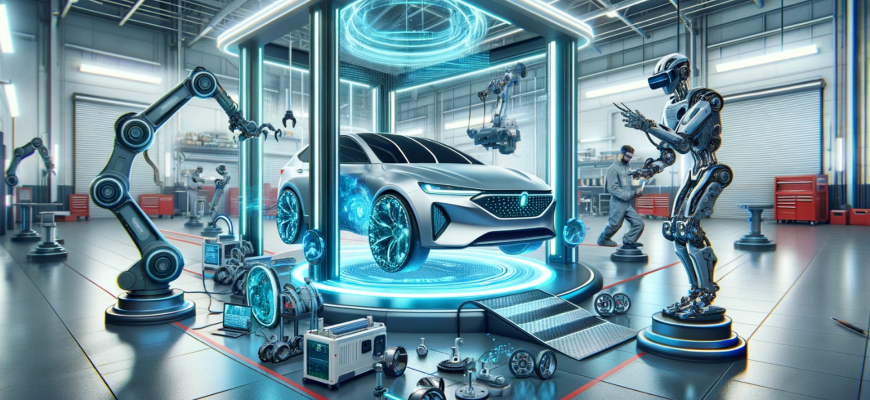
The auto body repair industry is witnessing a remarkable transformation, fueled by technological advancements that promise to redefine the way we maintain and repair our vehicles. In Australia, where the automotive sector is a pivotal part of the economy and daily life, these innovations are not just enhancing operational efficiencies but are also significantly improving the consumer experience. This article delves into the latest trends in auto body repair technologies, highlighting how they benefit Australian vehicle owners.
Paintless Dent Removal (PDR) Techniques
Paintless Dent Removal (PDR) represents a significant leap forward from traditional dent repair methods. And it’s something we are particularly proud of at Dynamic Paint N Panel. This technique involves the meticulous manipulation of dents from behind the vehicle’s paneling, preserving the original paintwork. For consumers, the advantages are manifold: PDR offers a cost-effective solution to dent repairs, without the need for repainting, thereby maintaining the vehicle’s value and aesthetic appeal. Moreover, PDR can often be completed in a fraction of the time required for conventional repairs, providing a swift return to the road, and at a lower cost than conventional repairs.
Advanced Diagnostics and Robotics
The integration of advanced diagnostics and robotics in auto body repair is setting new standards for accuracy and efficiency. Sophisticated scanning tools can now detect minute damages invisible to the naked eye, ensuring comprehensive repair. Robotics, on the other hand, brings unmatched precision to the repair process, reducing the possibility of human error. For the Australian consumer, this translates to more accurate estimates, superior repair quality, and ultimately, enhanced safety and reliability of the repaired vehicle.
Augmented Reality (AR) in Repair Services
Augmented Reality (AR) is introducing a new dimension to auto body repair, from training technicians with virtual simulations to enhancing customer service. AR can project virtual images of repairs over the actual vehicle, helping consumers understand the work required and the parts involved. This technology fosters transparency and trust, empowering Australian consumers with knowledge and insight into their vehicle repairs.
Augmented Reailty is still largely untested and relies heavily on AI technology and training of specialist technicians – is this style of repair still decades away, or just around the corner?
The Impact of Insurance and Warranty Advances
Technological advancements are also streamlining the insurance claims and warranty process, offering faster and more efficient service. Digital platforms enable quicker submission of claims and documentation, reducing processing times and getting repairs started sooner. For Australians, this means less downtime without their vehicle and a smoother, more convenient claims experience.
Challenges and Considerations
Despite the promising advancements, challenges such as the need for skilled technicians and the initial cost of adopting new technologies persist. Additionally, ensuring equitable access to these advanced repair services across both urban and rural Australia remains a concern.
The landscape of auto body repair in Australia is evolving, driven by technological innovations that promise improved efficiency, sustainability, and customer satisfaction. As the industry continues to embrace these trends, Australian consumers stand to benefit from repairs that are quicker, more affordable, and of higher quality than ever before. Embracing these advancements is not just about keeping pace with technology but about moving forward into a future where auto care is more accessible, transparent, and aligned with the values of today’s society.
One thing that never changes is DPPs commitment to ensuring flawless repairs, and top notch customer service no matter what technology we have at our disposal. We started using traditional methods and have continued to evolve with advances in technology. To see how we can improve the of your car’s body work call us today. We love helping South Australian drivers beaming with pride over their car.
How to Fix a Car Dent: A Comprehensive Guide for South Australians
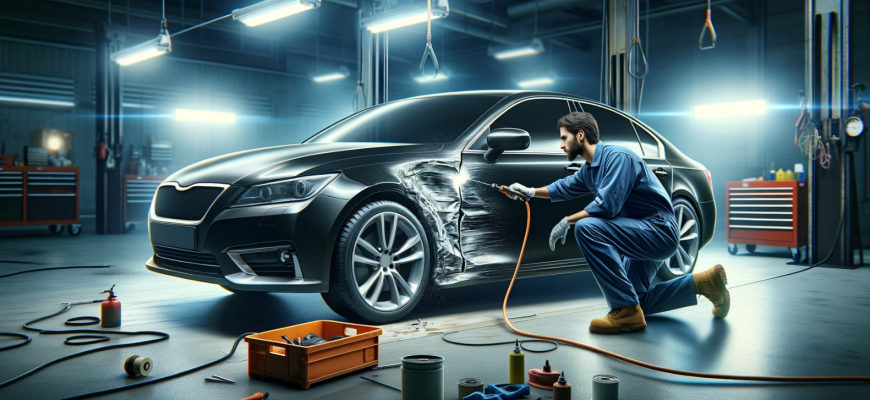
How to Fix a Car Dent: A Comprehensive Guide for South Australians
Car dents are more than just an eyesore; they can also decrease the value of your vehicle and, in some cases, affect its structural integrity. Whether it’s from a minor fender bender, hail damage, or a shopping cart mishap, understanding the process behind car dent repair is crucial for any car owner in Australia. This guide dives into the world of professional car dent repair, highlighting the expertise, tools, and considerations involved in making your vehicle look as good as new.
Understanding Car Dents
Car dents can vary significantly, from small dings to large indentations. The repair approach depends on several factors, including the dent’s size, location, and the vehicle’s body type. Understanding these differences is the first step in assessing repair options.
The Professional Dent Repair Process
Initial Assessment
A professional technician begins with a thorough assessment to understand the extent of the damage. This step is crucial as some dents may have underlying issues that aren’t immediately visible.
Repair Methodologies
Paintless Dent Removal (PDR): PDR is a popular repair method for small to medium-sized dents, where the paint surface is still intact. Technicians use special tools to gently massage the dent from behind the vehicle’s panel, restoring its original shape without needing to repaint the area.
Traditional Dent Repair: Larger dents or those where the paint has been compromised require a more invasive approach. This method involves sanding down the damaged area, applying a body filler, and repainting, which can be a time-consuming process.
Tools and Equipment
The tools for dent repair range from simple hand tools for PDR to sophisticated paint systems for matching the vehicle’s original color. 3D imaging technology is also becoming more prevalent for precise damage assessment.
The Expertise Behind Dent Repair
Dent repair is a skilled trade that requires significant training and experience. In Australia, technicians often undergo vocational training, such as a Certificate III in Automotive Body Repair Technology, complemented by years of on-the-job training. This expertise is crucial for effectively restoring a vehicle’s appearance and ensuring the repair lasts.
DIY vs. Professional Repair
While DIY kits are available, they often yield subpar results and can even worsen the damage. Professional repairs guarantee the use of the correct techniques and materials, ensuring a result that maintains your car’s value and appearance.
Choosing a Repair Service
When selecting a repair service, look for certified technicians with positive reviews and transparent warranty policies. Costs can vary based on the repair scope, but investing in quality repair is crucial for long-term satisfaction.
Maintenance Tips to Avoid Future Dents
Preventive measures can minimize the risk of dents. Parking away from other vehicles, using protective accessories like bumper guards, and maintaining a safe distance from potential hazards can help keep your car dent-free.
Car dent repair is a nuanced process that blends art and science. By understanding the types of dents, repair methodologies, and the importance of professional expertise, car owners can make informed decisions about their vehicle’s care. Always consult with a professional to assess and repair dents promptly, ensuring your car remains in pristine condition.
Remember, the appearance of your vehicle is not just about aesthetics; it’s also about maintaining its value and ensuring its longevity. Trusting professionals with the right training and tools for the job is the best way to achieve this.
The Hidden Risks of DIY Car Dent Removal: Why Professionals Do It Better
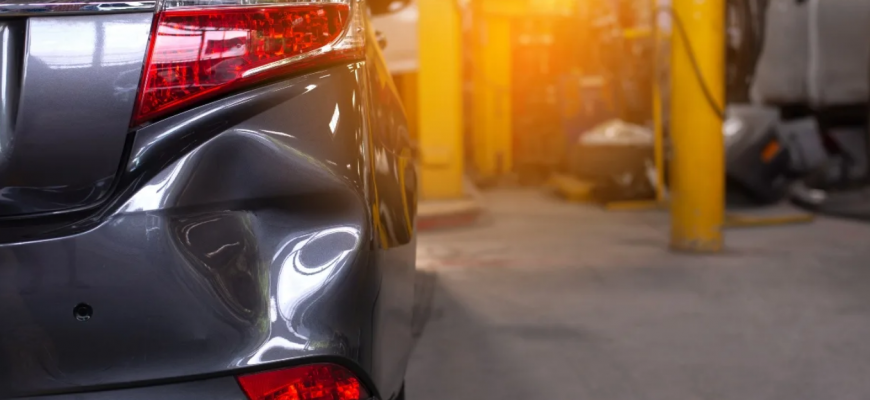
A dent on your car can be an eyesore and a reminder of an unfortunate incident. In Australia, where cars are not just a mode of transport but often a reflection of one’s lifestyle, keeping them in pristine condition is a priority for many. Among the myriad DIY fixes touted online, using a plunger to remove car dents stands out for its simplicity and the allure of a quick fix. However, the real question remains: Is it a viable long-term solution, or does it mask deeper issues?
Understanding the Plunger Method
The principle behind the plunger method is straightforward: by creating a vacuum, the plunger can pull the dented metal back into place. This method is often recommended for small to medium-sized dents where the paint has not been cracked or chipped. The steps involve moistening the plunger and the dent area to create a better seal, then using firm, consistent pressure to pop the dent back out – but there is a catch. It appears to only “work” (sometimes) on plastic parts of the car’s body work.
Hazards of DIY Car Dent Removal
The simplicity of the plunger method belies the potential risks involved in DIY dent removal. Applying uneven pressure or using the technique on unsuitable dents can exacerbate the damage, affecting the paint and underlying metal. Moreover, without the proper assessment, what appears as a minor dent could be indicative of more significant structural damage, a fact that DIY methods can easily overlook.
The Professional Alternative: Paintless Dent Removal (PDR)
Paintless Dent Removal (PDR) is a professional repair process that involves specialized tools and techniques to remove dents without affecting the vehicle’s factory paint job. Unlike DIY methods, PDR is performed by trained technicians who can assess the damage accurately and determine the most effective repair strategy. This method not only ensures the integrity of the repair but also maintains the vehicle’s resale value.
Why Trust Professionals Over DIY?
Professionals bring years of training and experience, coupled with an understanding of the nuances of automotive bodywork. They use specialized tools designed to access and repair dents from behind the vehicle’s paneling, ensuring a repair that’s both effective and invisible. The risk of additional damage is minimized, and many professionals offer warranties on their work, something DIY repairs cannot match.
Cost-Benefit Analysis: DIY vs. Professional Dent Removal
While the initial cost of a DIY fix might seem lower, the potential for inadvertently increasing the damage can lead to more substantial repair bills down the line. Professional PDR, on the other hand, while seemingly more expensive upfront, can prevent further issues and help maintain the car’s value over time. It’s a classic case of spending a little now to save a lot later.
Conclusion
While the allure of a quick and easy DIY fix for car dents is understandable, the potential risks and downsides cannot be ignored. Professional paintless dent removal offers a safer, more reliable solution that preserves both the vehicle’s appearance and its value. By choosing a professional repair, car owners can ensure their vehicle receives the care it deserves, safeguarding their investment for the future.
Car Accidents Without Insurance: A Guide for South Australian Drivers
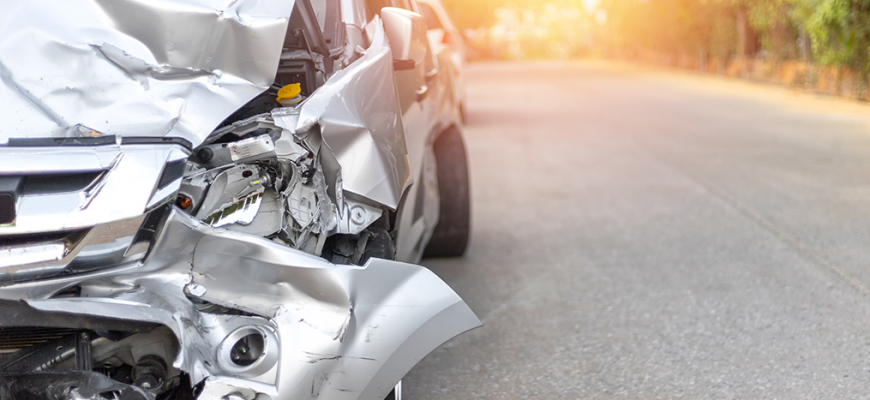
Every year, numerous South Australians find themselves tangled in the aftermath of car accidents. Among these incidents, a significant portion involves drivers without insurance, leading to complex legal and financial dilemmas. This article aims to navigate South Australian drivers through the immediate steps and considerations following a car accident, particularly when uninsured, ensuring safety and minimizing potential repercussions.
Understanding Insurance Requirements in South Australia
In South Australia, it’s mandatory for all vehicle owners to have Compulsory Third Party (CTP) insurance, which is included in vehicle registration fees. This insurance covers injuries to people if the vehicle owner or driver is at fault in an accident. However, it does not cover damage to vehicles or property, which is where comprehensive or third-party property insurance comes into play. Driving without at least CTP insurance is illegal, with severe penalties for non-compliance, highlighting the gravity of maintaining at least the minimum insurance coverage.
Immediate Steps Following a Car Accident
Ensure Safety
The immediate aftermath of a car accident can be chaotic and confusing. The first priority should always be safety. Check for injuries among all parties involved. If anyone is injured, call emergency services immediately. If the vehicles are posing a hazard, move them to a safe location, if possible.
Call for Help
South Australian law requires the police to be notified if the accident causes injury or significant property damage. If in doubt, it’s safer to call the police. They can provide necessary assistance and create an official accident report, which may be crucial for legal and insurance purposes.
Assessing the Situation and Information Exchange
Once everyone’s safety is ensured, exchange names, addresses, phone numbers, and vehicle details with the other driver(s). Note the location and time of the accident, and if possible, take photos of the scene and any damages. Avoid discussions about who is at fault, as these statements can complicate legal and insurance matters.
Dealing with a Car Accident Without Insurance
Legal and Financial Implications
Driving without insurance can expose you to significant financial risks. If found at fault, you could be liable for the cost of repairs to all vehicles involved, as well as compensation for any injuries. These expenses can be financially crippling, underscoring the importance of at least having CTP coverage.
Seeking Legal Advice
It’s advisable to consult a legal professional to understand your rights and obligations following an accident, especially if uninsured. They can provide guidance on how to navigate potential claims against you and explore options for managing the financial implications.
Importance of Choosing a Trusted Crash Repairer
In the event of a car accident, choosing a reputable crash repairer is crucial, particularly before contacting your insurer, if you have a choice of repairer. This decision can significantly impact the quality of repairs and the overall outcome of your claim. Investigate local repairers, read reviews, and seek recommendations to find a trustworthy service provider. This proactive approach can prevent insurers from directing you to less reputable repairers, ensuring a higher standard of repair for your vehicle.
Reporting to Authorities and Insurance Considerations
Report the accident to the police if required by South Australian law, and obtain a copy of the report for your records. If you have insurance that covers damage to others, notify your insurer as soon as possible. Provide all necessary details and cooperate with their investigation. If you lack comprehensive insurance, discussing the situation with a legal advisor can help you understand how to manage any claims made against you.
Navigating a car accident without insurance in South Australia requires a clear understanding of legal requirements, immediate steps for safety, and strategic decisions regarding vehicle repairs. While the consequences of driving uninsured can be severe, taking informed actions post-accident can mitigate the negative impacts. Ultimately, maintaining appropriate insurance coverage is the most effective strategy to protect yourself from the significant financial and legal risks associated with car accidents. Prioritize safety, stay informed, and drive responsibly to minimize the chances of finding yourself in such a predicament.
What to do after an accident
What to Do After a Car Accident: A Guide for South Australian Drivers
Navigating the aftermath of a car accident can be overwhelming, especially amidst the stress and confusion that often ensue. For drivers in South Australia, understanding the steps to take following an accident is crucial—not only to ensure the safety and well-being of all involved but also to navigate the legal and insurance processes that follow. This guide provides a comprehensive overview of what to do after a car accident, emphasizing the importance of informed decisions, particularly when selecting a crash repairer.
Immediate Steps Following an Accident
Ensure Safety First
The immediate aftermath of an accident is critical. Your first priority should be to check for injuries among all parties involved. If anyone is injured, move to a safe location if possible, but do not leave the scene. Disturbing the accident scene should be avoided unless necessary for safety.
Assess the Situation
Depending on the severity of the accident, calling emergency services on 000 for medical support, fire services, or police assistance might be necessary. In South Australia, certain accidents must be reported—such as those involving injuries, significant property damage, or uncooperative parties.
Legal and Safety Obligations
Reporting to the Police
In South Australia, the law requires reporting accidents under specific circumstances, including injuries or significant damage. The report should be made to the nearest police station, and failure to report can have legal consequences.
Exchange Information
Exchanging contact and insurance information with the other driver(s) is essential. This includes names, addresses, phone numbers, insurance details, and vehicle registration numbers. It’s important to remain calm and cooperative during this process.
Documenting the Accident
Collect Evidence
Taking photos of the scene, the damage to all vehicles, and any relevant road signs or conditions can be invaluable. Additionally, gathering the contact details of any witnesses can support your account of the event.
Take Notes
As soon as you’re able, write down your recollection of the accident, including the time, location, and how it occurred. These notes can be crucial for insurance claims and legal matters.
Dealing with Insurance
Immediate Contact
Notify your insurer about the accident as soon as possible. Prompt communication is essential to initiate the claims process and ensure coverage.
Understanding Your Policy
Familiarize yourself with your insurance policy, especially regarding the “choice of repairer” if your policy includes this option. This knowledge is vital before making any decisions about vehicle repairs.
Choosing a Trusted Crash Repairer
Importance of Choice
Selecting a crash repairer you trust is crucial before contacting your insurer, particularly if you have a choice of repairer in your policy. This decision can significantly impact the quality of your vehicle’s repairs.
Researching Repairers
Do your homework by researching reputable crash repairers in South Australia. Consider factors such as certifications, customer reviews, and personal recommendations. A trusted repairer can ensure your vehicle is restored to its pre-accident condition.
Avoiding Sub-Par Repairers
Be wary of automatically accepting your insurer’s suggested repairer without conducting your research. This can lead to issues with the quality of repairs. Remember, you have the right to choose a repairer who meets your standards.
Post-Accident Care and Support
Follow-Up Medical Care
Even if you feel fine, it’s wise to seek medical attention after an accident. Some injuries may not be immediately apparent but can cause problems later.
Legal Advice
If there are disputes about fault or complications with insurance claims, consulting with a legal professional may be beneficial. Legal advice can help navigate these complexities.
Support Services
Accidents can be traumatic. Accessing support services for mental health and well-being is as important as addressing physical injuries. Various resources are available for South Australians in need.
Being involved in a car accident is a challenging experience. However, knowing the steps to take afterward can alleviate some of the stress and confusion. By following this guide, South Australian drivers can ensure their safety, fulfill their legal obligations, and make informed decisions throughout the insurance and repair processes. Keep a checklist of these steps in your vehicle, ensuring you’re prepared for the unexpected.
Remember, the decisions you make after an accident can have long-term implications on your safety, your vehicle’s condition, and your legal and financial well-being. Stay informed, stay safe, and choose wisely.
Australia’s Road Safety Crisis: Falling Behind the World and What It Costs You
Australia’s commitment to road safety has traditionally been strong, with various initiatives aimed at reducing road fatalities and injuries. However, as technology advances, the gap between Australia’s safety standards for new vehicles and those of leading global benchmarks, notably the European Union (EU), is becoming increasingly evident. This disparity is highlighted by the slow adoption of Advanced Driver Assistance Systems (ADAS) technologies in Australian vehicles, technologies that are becoming mandatory in Europe and have proven potential to save lives on the road.
The Urgency for Advanced Safety Features
The EU’s proactive stance, mandating a suite of ADAS features for all new car models from July 2022 and for all new cars from July 2023, sets a precedent that Australia is currently trailing. Features like Intelligent Speed Assistance, lane-keeping assist, blind-spot detection sensors, and “black box” event recorders are now compulsory in Europe, underlining a commitment to leveraging technology for road safety.
Australia’s response, albeit cautious, is evolving. The Australian Design Rules (ADRs) are under review to potentially include these life-saving features, with automated emergency braking slated to become mandatory by 2026. This gradual inclusion of ADAS features marks a pivotal shift in Australia’s road safety strategy but also underscores the need for urgency given the technology’s potential impact on road safety outcomes.
Bridging the Safety Standards Gap
The stark difference in vehicle safety standards between Australia and the EU highlights an urgent need for Australia to align more closely with global best practices. As noted by Ingrid Johnston, CEO of the Australasian College of Road Safety, the delay in mandating new safety features means a prolonged period before these technologies become standard across the Australian vehicle fleet, given the country’s average vehicle age of around 10 years.
This delay has tangible consequences. For example, a NSW government trial suggested that speed assistance technology alone could reduce fatalities by 19 percent if universally adopted. The cost of integrating such technology, estimated by the European Commission to add $300 to $400 to the cost of new cars, is a small price to pay for the potential to save lives.
Challenges and Considerations for Local Implementation
The path to adopting these advanced safety features in Australia is not without its challenges. Infrastructure readiness, including comprehensive GPS coverage and accurate speed limit maps, is crucial for technologies like Intelligent Speed Assistance to be effective. Similarly, the effectiveness of lane-keeping assist systems is contingent on the quality of road markings, which may not be consistent across all Australian roads.
These considerations emphasize the need for a dual approach that combines regulatory changes with infrastructure improvements to support the effective deployment of ADAS technologies. As Stuart Newstead from the Monash Accident Research Centre points out, the evaluation of these technologies’ benefits in the local context is essential to ensure their effectiveness and suitability for Australian roads.
Consumer Guidance and International Alignment
The role of the Australian New Car Assessment Program (ANCAP) in providing safety ratings for new vehicles is crucial in guiding consumer choices towards safer cars. ANCAP’s assessments, which include evaluating non-mandatory safety features, play a vital role in raising awareness about vehicle safety standards and encouraging manufacturers to prioritize safety.
Furthermore, aligning Australia’s design standards with international standards, as pursued by the Federal Transport Department, ensures that Australian drivers have access to vehicles equipped with the latest safety technologies at competitive prices. This alignment, while respecting the unique aspects of the Australian market, is key to ensuring that safety innovations are not delayed in their introduction to the Australian market.
Moving Forward
The debate over the role of regulation versus market response, as highlighted by Tony Webber of the Federal Chamber of Automotive Industries, underscores the complexity of advancing vehicle safety standards. While the market has naturally evolved to include more safety features over time, regulatory intervention is necessary to ensure that all vehicles, regardless of price point, are equipped with essential safety technologies.
As Australia looks to reduce road fatalities and injuries, the integration of ADAS technologies into the Australian Design Rules represents a critical step forward. By learning from global best practices, especially those in the EU, and addressing the unique challenges of the Australian landscape, Australia can enhance the safety of its vehicle fleet, ultimately saving lives and reducing the burden of road trauma on society.
For more insights into vehicle safety and maintenance, explore our blog for articles like “The Importance of Using Genuine Parts In Crash Repairs” and “Worn Tyres Is Saving A Few Dollars Worth The Risk On The Road” at https://dynamicpaintnpanel.com.au/blog/.
Revealed: The Shocking Truth About Australia’s Ageing Car Fleet Putting Lives at Risk
The Crucial Link Between Vehicle Age, Repair Quality, and Road Safety
In an era where economic constraints are a stark reality for many, the trend of retaining older vehicles has become increasingly prevalent. This shift towards aging automobiles presents a significant challenge to road safety, given the absence of modern safety features in these vehicles. As a leading crash repair specialist, we understand the profound impact that both vehicle age and repair quality have on road safety. Through this lens, we explore the multifaceted relationship between these elements and offer insights into how drivers, repairers, and policymakers can navigate these challenges to ensure safer roads for everyone.
Understanding the Safety Implications of Older Vehicles
The average age of a vehicle in Australia now exceeds 10 years, with a sizable portion of the fleet significantly older. These vehicles, often devoid of recent advancements in safety technology, place their occupants at a higher risk during road incidents. From lane departure warnings to autonomous emergency braking, the absence of these innovations in older models underscores a growing digital divide in vehicle safety. This divide not only compromises the safety of individuals but also poses broader risks to public road safety.
The Role of Repair Practices in Ensuring Vehicle Safety
The safety of a vehicle post-accident is heavily contingent upon the quality of repairs undertaken. Incorrect or substandard repairs can severely undermine a vehicle’s structural integrity and the functionality of its safety systems. This issue is particularly critical for older vehicles, where sourcing appropriate replacement parts can be challenging, leading to potential compromises in repair quality.
As crash repair specialists, we emphasise the importance of adhering to stringent standards in vehicle repair. It is imperative to ensure that vehicles, especially those involved in accidents, are restored to their pre-accident condition, not just aesthetically but, more importantly, in terms of their safety capabilities. This commitment to excellence in repair work is vital in maintaining the safety of the vehicle on the road.
Bridging the Gap with Education and Policy
While technological advancements continue to enhance vehicle safety, economic realities often limit the ability of drivers to access newer, safer vehicles. It is here that the role of informed repair practices, alongside supportive policies and educational efforts, becomes paramount.
Incentives for Upgrading: To encourage the transition towards vehicles equipped with advanced safety features, we advocate for policy incentives such as rebates, tax breaks, or scrappage schemes. Such initiatives can significantly reduce the financial burden on individuals, making it more feasible to opt for newer, safer models.
Raising Awareness: Educating drivers about the importance of vehicle safety and the potential risks associated with older cars is crucial. Targeted educational campaigns can help illuminate the benefits of modern safety features, particularly for young or inexperienced drivers who are more likely to own older vehicles. Awareness can also extend to the significance of choosing reputable repair services that uphold the highest standards of safety and quality.
Public Transport and Road Design: Enhancing public transport options and investing in safer road designs can mitigate some of the risks associated with driving older vehicles. For regions with an aging vehicle fleet, such as South Australia, these measures are especially critical in reducing the overall road accidents.
The landscape of vehicle safety is ever-evolving, with new technologies continually raising the bar for road safety. However, the pervasive issue of older vehicles lacking these advancements, coupled with the critical need for high-quality repair practices, presents ongoing challenges. As a dedicated crash repairer, our role extends beyond mere repairs; it encompasses a commitment to ensuring that every vehicle we restore meets the highest standards of safety and performance.
In navigating the complexities of vehicle age, repair quality, and safety, a collective effort is required. By combining technological advancements, economic incentives, and educational efforts, we can work towards a future where road safety is not a privilege afforded by newness but a standard upheld across the board. Together, we can drive towards a safer future for all road users, ensuring that safety is not compromised by the age of a vehicle or the quality of its repairs.



